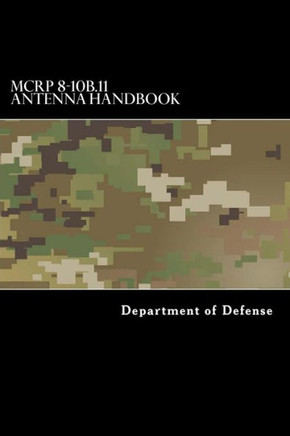
Createspace Independent Publishing Platform
Mcrp 8-10B.11 Antenna Handbook
Product Code:
9781548348465
ISBN13:
9781548348465
Condition:
New
$10.65

Mcrp 8-10B.11 Antenna Handbook
$10.65
Communications and information systems (CIS) support collecting, processing, and exchanging information. CIS automate routine functions, freeing commanders and staffs to focus on the aspects of command and control that require experience, judgment, and intuition. Personnel who install, operate, and maintain CIS play a key role in the command and control of the Marine airground task force (MAGTF). It is an understatement to say that the success of the MAGTF in the modern battlespace depends on the effective employment of CIS. One of the most important networks of the MAGTF CIS architecture is single-channel radio (SCR). SCR is the principal means of communications support for maneuver units. SCR communications equipment is easy to operate, and networks are easily established, rapidly reconfigured, and, most importantly, easily maintained on the move. SCR provides secure voice communication and supports limited data information exchange. MAGTF SCR equipment is fielded in many configurations and includes hand-held, manpack, vehicle-mounted, bench-mounted, and sheltered radios. These radios operate in simplex and half duplex modes. The most widely employed tactical radios provide integrated communications security (COMSEC) and jam resistance through frequency hopping. Tactical SCRs operate in the three military radio frequency bands (high frequency [HF], very high frequency [VHF], and ultrahigh frequency [UHF]). In the HF band, SCR can support long-range communications, albeit at the expense of mobility. SCR in the VHF and UHF bands is normally limited to line of sight. SCR satellite communications (SATCOM) provide mobility, flexibility, and ease of operation with unlimited range. Limitations of SCR include susceptibility to enemy electronic warfare; cosite, footprint, terrain, and atmospheric interference; the requirement for close coordination and detailed planning; a need for common timing, frequency, and equipment; and limited spectrum availability. The latter is particularly critical for SATCOM. Of all the variables affecting single-channel radio communications, the one factor that an operator has the most control over is the antenna. With the right antenna, an operator can change a marginal net into a reliable net. Marine Corps Reference Publication (MCRP) 6-22D, Antenna Handbook, gives operators the knowledge to properly select and employ antennas to provide the strongest possible signal at the receiving station of the circuit. MCRP 6-22D builds on the doctrinal foundation established in Marine Corps Warfighting Publication (MCWP) 6-22, Communications and Information Systems. This handbook is intended not only for CIS officers and radio operators, but for all personnel desiring information about antenna fundamentals. MCRP 6-22D supersedes Fleet Marine Force Reference Publication (FMFRP) 3-34, Field Antenna Handbook, dated 5 March 1991.
| Author: Department of Department of Defense |
| Publisher: CreateSpace Independent Publishing Platform |
| Publication Date: Jun 25, 2017 |
| Number of Pages: 194 pages |
| Language: English |
| Binding: Paperback |
| ISBN-10: 1548348465 |
| ISBN-13: 9781548348465 |





